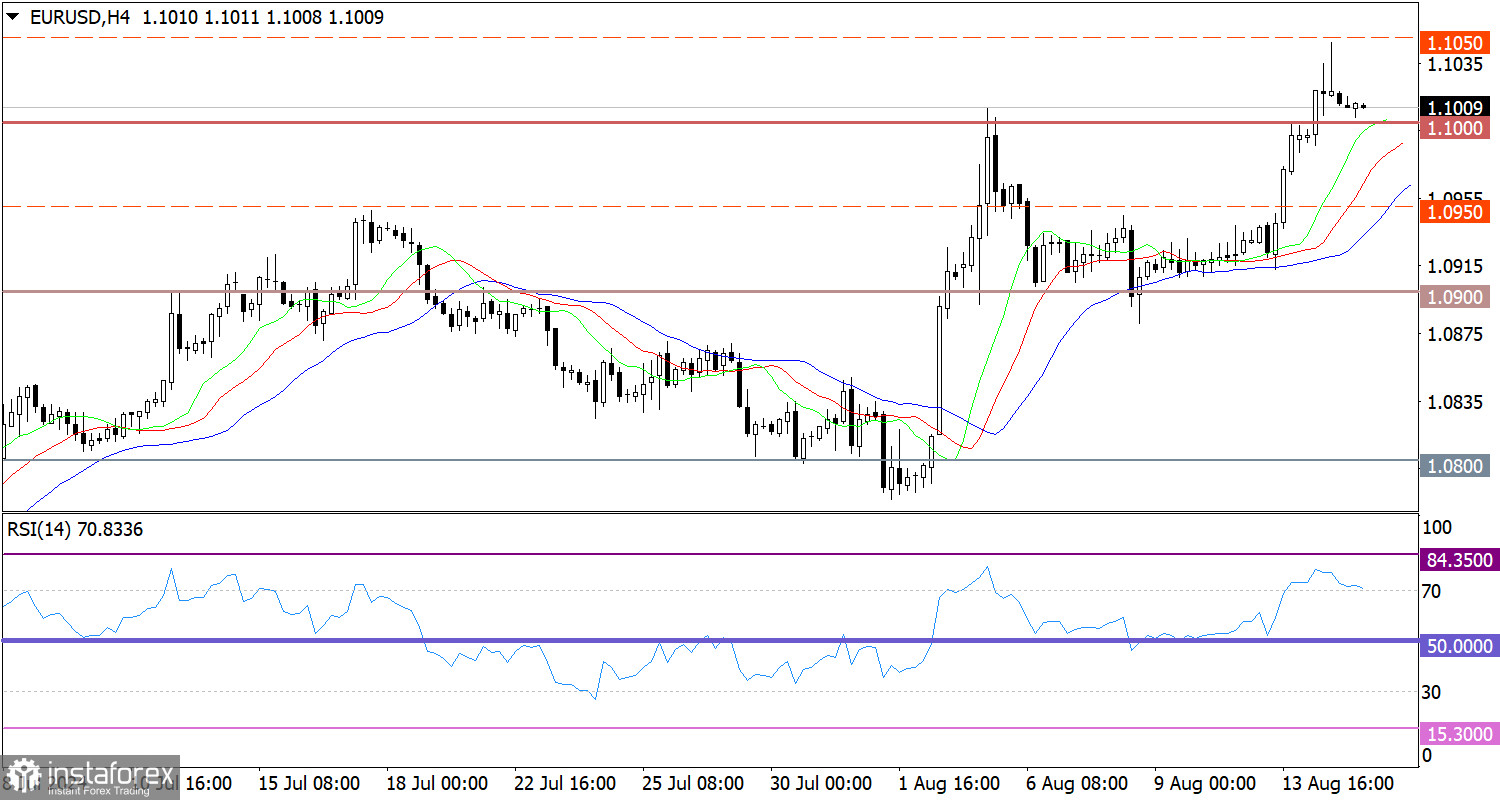Amid the slowdown in the growth rate of consumer prices in the United States from 3.0% to 2.9%, the dollar dropped to almost its lowest level since the beginning of the year. This inflation data indicates the inevitability of a Federal Reserve interest rate cut as early as September. Another factor contributing to the dollar's weakness is inflation in the UK, which rose from 2.0% to 2.2%, suggesting that the Bank of England might pause its monetary easing. However, the potential for further weakening of the US currency will be limited by disastrous data from the Eurozone, where the pace of industrial production decline accelerated from -3.3% to -3.9%. Expectations were for a 0.6% annual growth.
Today, at least during the European trading session, the dollar might recover some of its losses from yesterday, particularly due to the industrial production data. For instance, in the UK, a growth of 0.4% might turn into a decline of -1.8%. However, after the US trading session opens, the dollar is expected to come under pressure again. The focus will shift to retail sales in the US, where growth rates are expected to slow from 2.3% to 1.8%. This pressure will be exacerbated by the US industrial sector, where growth rates will likely decelerate from 1.6% to 1.1%. So, there is a possibility that by the end of the trading day, the dollar will reach its lowest level since the beginning of the year.

During a speculative rally, the EUR/USD pair locally reached the upper bound of the psychological levels 1.0950/1.1000/1.1050. This movement extended the upward trend, though there are some subtle technical aspects to consider.
In the 4-hour chart, the RSI technical tool, despite the ongoing pullback, has not left the overbought zone. This action indicates a persistent upward bias.
Regarding the Alligator indicator in the same time frame, the moving average lines point upwards, aligning with the direction of the price movement.
Expectations and Prospects
For a major wave of growth in long positions, which would signal the subsequent development of an upward trend, it is necessary to stabilize the price above the value of 1.1050. Instead, there was a significant decrease in long positions near this level, which led to the rebound of the price. As long as the area of the psychological level retains its strength, euro buyers will be limited in movement, allowing for either a pullback or stagnation within the specified range of 1.0950/1.1050.
The complex indicator analysis indicates an upward cycle for the short-term and intraday periods.





















